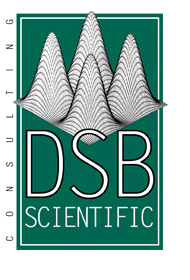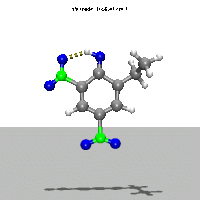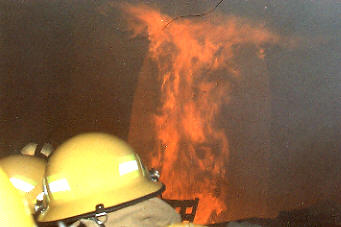  
Services
   
Products   

Resources    |
chamber is an open source, GPL licensed software package designed specifically for small arms interior ballistics research. Currently in Alpha development, DSB Scientific has the following design goals for chamber:
Design Goals
- Use a 'first principles' approach; though they may be included for comparison purposes, we will avoid heavily parameterized, semi-empirical models.
- Accurate modeling of the entire interior ballistic dynamics: initiation, combustion and material effects. Models should correctly predict the pressure vs. time at single and multiple points, pressure vs initial temperature, muzzle velocity, etc.
- Accurately model multiple peaks in the pressure-time curves of some cartridges.
- Be useful for modeling material failures, including distinguishing between deflagration induced and detonation induced failures
- Include heat flow effects, as well as a means to compute the thermal conductivity for materials/propellants for which data is not readily available
- Incorporate user-selectable burn models
- Incorporate user-selectable equations of state
- Incorporate user-selectable flow modeling methodologies
For downloads and CVS snapshots, chamber project on SourceForge.
Burn Models
chamber allows users to select different burn models for burning the propellant. This allows the researcher to test different the different models against a given data set as well as adding the flexibility to use chamber to simulate other fast reaction hydrodynamic systems.
- Bulk Burn derived by Charles Forest at Los Alamos (present in the Alpha version)
This burn model is relatively simple and includes a term describing the geometry of the propellant grains and one describing the pressure dependence on the burn rate. This is the core burn routine used for Alpha testing.
- Arrhenius Burn (present in the alpha version)
This burn uses a temperature dependent calculated rate and has the advantage of being 'microscopic' in nature. That is, we can compute the two adjustable parameters from first principles and statistical mechanics if need be, but there are a lot of fundamental reaction systems for which the parameters have been measured.
- Forest Fire Burn derived by Charles Forest at Los Alamos (partially coded)
This is the heterogeneous multi-shock burn technique used to 'turn-on' detonation; this will be useful for capturing the deflagration-to-detonation transition (DDT) if it occurs in a specific system. Also, including this burn will allow chamber to be used for simple confined explosive modeling, such as for Improvised Explosive Devices (IEDs) using small arms propellants or high explosive components.
- Baer-Frankle Burn (planned)
This burn is similar to the Bulk Burn derived by Forest and is common in interior ballistics modeling. It will be added to chamber but is not presently coded.
Equations of State
One of the most crucial, and difficult, aspects of modeling high temperature or high pressure thermodynamics is the choice of the Equation of State (EoS). While many discuss interior ballistics using the simple Ideal Gas Law, this cannot give quantitive agreement with experimental data. EoS's are often heavily parameterized to allow 'adjustment' to specific data. Many successful high pressure (or shock) EoS's use some form of the Virial Equation of State with exponential repulsive terms and covolumes for volume exclusion, but there has been work done to simplify the mathematical form of EoS's suitable for specific types of modeling.
To allow the interior ballistics reseacher the greatest flexibility, chamber will include numerous equations of state to link the key state variable of pressure, volume and temperature.
- Becker-Kistiakowsky-Wilson (BKW) (planned)
The BKW EoS has been a mainstay for detonation and propellant modeling at Los Alamos for over forty years. This EoS uses an exponential repulsive term added to a truncated virial equation with geometry covolumes to include 'exclusion' zones around molecules.
- HOM (present in alpha version)
HOM is a shock equation of state useful for hydrodynamic modeling with shock pressures up to hundreds of kilobars at least. With about 17 parameters, HOM is rather heavily parameterized, but gets the parameters as fits to equilibrium BKW EoS results.
- Jones-Wilkins-Lee (JWL) (planned)
JWL is another shock EoS useful in the detonation regime. With far fewer parameters than HOM, JWL is a much simpler equation; this may result in faster calculations. The JWL parameters are often obtained by fitting HOM shock Hugoniots.
- Others (planned)
CFD Models
chamber is a hydrodynamic simulation package that models not only the burn reaction dynamics but also deformation, spalling, material failures and (in the case of detonation modeling) shock propagation in the various materials present (steel, lead, etc). Problems of this type involve solving the Navier-Stokes for velocity, pressure, temperature, etc. There are many approaches to solving these equations; they vary in terms of complexity, geometry, and specificity.
chamber currently uses finite differences to solve the flow equations. A finite volume method is being considered for later inclusion.
- 1D Lagrangian (planned)
This is an implementation of the Los Alamos SIN code used for hydrodynamic modeling in one dimension.
- 2D Lagrangian (present in alpha version)
The 2D Lagrangian is used to model systems with cylindrical symmetry that have limited 'mesh distortion.' It has a limitation that 'blocks' of material in the problem domain must be single component, but is otherwise useful for basic calculations. Due to simplicity compared to the Euler code, this is the core routine in the early test versions of chamber. Lagrangian calculations are both smaller and faster than Eulerian calculations.
- 2D Eulerian (about 70% coded in alpha version)
Many problems produce mesh distortions that destabilize the Lagrangian calculations; in addition, some problems require the use of multicomponent 'mixtures' in the system. For these, an Eulerian calculation must be performed. The Eulerian code is much more complex, and such a calculation will require more memory and run time (for a given problem size) than the Lagrangian. However, Euler calculations are often not as accurate as Lagrangian ones. Though it is what is ultimately needed for chamber to be used for DSB Scientific's internal research, development of the Eulerian was postponed to get the simpler Lagrangian working first.
- 3D Eulerian (planned)
If by using symmetry, the problem cannot be 'reduced' to two dimensions, a 3D calculation must be performed. chamber will contain a 3D Eulerian at some point.
- Arbitrary Lagrangian-Eulerian (ALE) (planned)
The ALE approach takes a computational middle ground between the Lagrangian and Eulerian methods. With this technique, calculations begin as Lagrangian and only those cells that become highly distorted get flagged and are then treated using the Euler method. This keeps the computational time and memory footprint smaller but more accurate than with pure Eulerian calculations. Obviously, the Euler and Lagrange subroutines have to be fully functional and tested before ALE can be implemented.
Development Status
chamber is currently classified in Alpha status. This means the code is not ready to be used to model real data, but must be debugged and have the various routines validated against simple test-cases. This does not mean you cannot download (or checkout from CVS) chamber and use it or modify it. It simply means that right now it does not do much and any given CVS snapshot will probably contain significant debugging 'overhead.'
After debugging and simple validation of the 2D Lagrangian code, chamber will enter Beta phase. At this phase, users will be encouraged to use chamber and to provide as much feedback to the development team as possible. There is a huge variety of experimental data chamber may be used to model, and there is no way we can test every combination.
In a way, chamber as an end-user product will never be finished. As soon as one model/component is complete, work will shift to another. We will probably drop the Beta classification (and move to Production) as soon as the 2D Lagrangian is solid, but there will still be Beta versions of specific new routines/features.
|






















